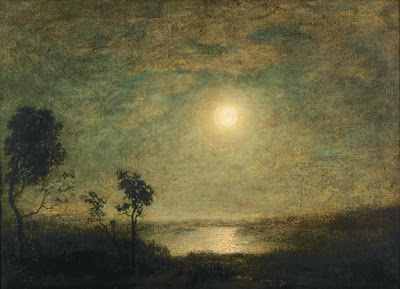I’ve been in every state except Hawaii, and most Americans have seemed smart, informed, and good-natured.
 |
| Shenandoah Valley, by Carol L. Douglas, from a prior trip. |
“The south,” in American parlance, isn’t a geographical distinction. Rather, it’s a political distinction. Those states that seceded in 1860-61 are “the south,” and the rest of us are “the north.”
I’m heading south, but I don’t intend to start my poking and painting properly until after Chattanooga. Still, I occasionally exit the interstate in places where the landscape means something to me.
Old Federal Route 11 is the historic highway that US 81 largely supplants. At Chambersburg, PA, it crosses the Lincoln Highway. That’s one of the earliest transcontinental highways, built in 1912-13. Years ago, I painted my way north through Virginia and Maryland to Dauphin County, PA, with a tent and my little dog Max, who was just a youngster at the time. Much of that trip was spent on the Civil War battlefields of Northern Virginia.
| Campbell’s Field, by Carol L. Douglas, was painted in Dauphin County, PA. |
The Shenandoah Valley is one of those places that calls me inexorably off the road. This has nothing to do with the valley’s natural beauty, which is considerable. Because of its strategic importance it was the scene of many bloody engagements in the Civil War. That history can be compressed into two armies chasing each other up and down the length of the valley. Finally, in the fall of 1864, Phil Sheridan cleared Jubal Early out, once and for all, with a scorched-earth campaign that foreshadowed Sherman’s March to the Sea.
Yesterday, I drove slowly along the verge at Cedar Creek Battlefield and up a side road to Belle Grove Plantation. Nothing has changed since I was last here in 2014. Cows graze on the battlefields, and the plantation house sits in rather bleak splendor. Still, you can’t pitch a penny in this countryside without hitting a spot where some American died, violently.
Why was General Sheridan so ruthless, so effective, compared to the generals who went before him? The answer, I think, lies in our deep reluctance to hurt our fellows. Finally, after the election of 1864, the American public had had enough. Sheridan and Sherman (and Grant, of course) had the license to wrap it up.
| It was a driving day yesterday, but I couldn’t resist doing this one small sketch, Early Spring in the Shenandoah Valley. |
Four years of intense combat left 620,000 to 750,000 people dead, in a nation of 31 million people. It’s no wonder that their voices seem to call from every rock and spring in Virginia.
Imagine what that would mean with our current population: between six and seven million casualties.
Every time we casually drop terms like “libtards” or “deplorables” to describe our political opponents, we contribute to the same kind of hatred that led to Senator Charles Sumner being caned in the well of the Senate, and from there to civil war. We face issues now that bite at the nature of our Union, the same way slavery bit at our union in 1856. Can we solve them without establishing new killing fields?
I’ve been in every state except Hawaii, and the people I’ve met have been smart, informed, and good-natured. Cultivating peace starts with cultivating respect.







